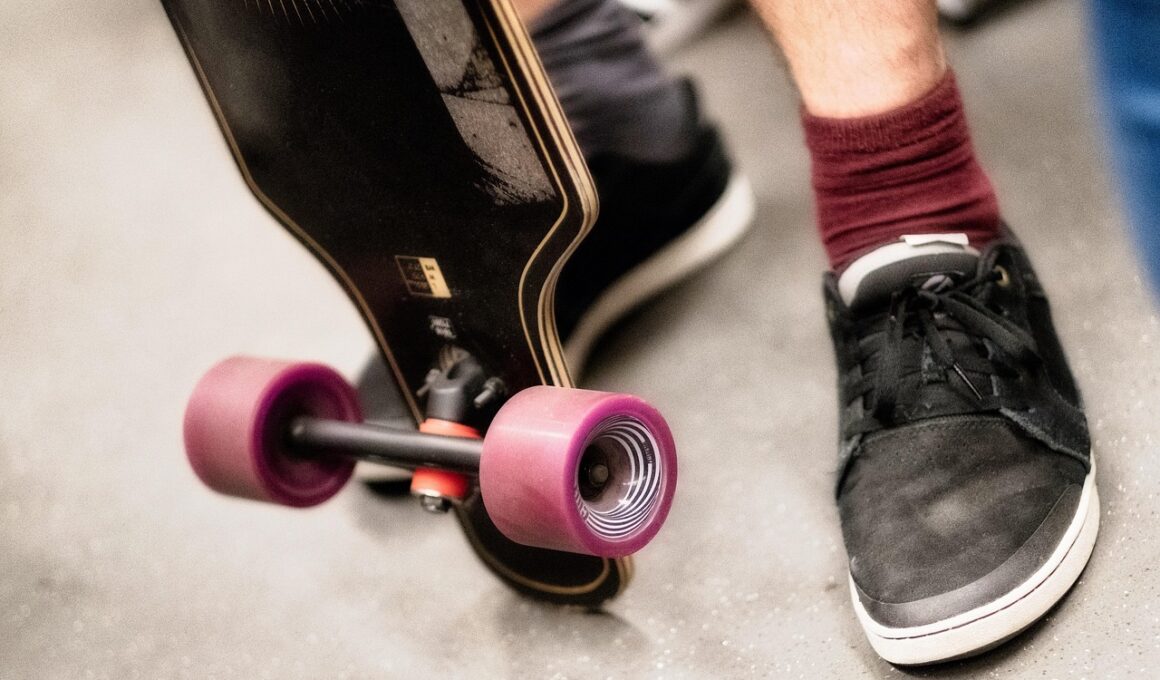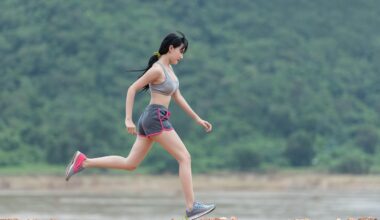How to Create Inclusive Fitness Activities for Youth with Disabilities
Creating inclusive fitness activities for children with disabilities is essential for promoting health and well-being. These activities help integrate kids into social environments, fostering friendships and teamwork. When planning such activities, first consider the individual needs of each child. Understanding their abilities and limitations is crucial for devising effective exercises. To begin, involve parents and caregivers in the planning process, as they offer insights into the child’s specific requirements. Research various adaptive equipment options available, such as modified balls and specialized exercise machines. This ensures that all participants can engage comfortably. Next, develop a curriculum that balances fun and physical challenge, providing options that encourage participation. Incorporate a wide range of activities—from swimming to yoga—to keep their interest level high. Physical structure is vital, so ensure the venue is accessible, with ramps and wide doorways. Arrange the space to prevent accidents and provide safe environments for each activity. Lastly, obtain feedback from children and their families to adapt offerings continually. This ensures activities evolve based on their experiences, fostering a sense of belonging. An inclusive approach truly enhances their fitness journey and confidence.
Engaging Kids with Varied Activities
To ensure participation and enjoyment, it’s crucial to offer varied activities tailored for children with disabilities. This variety not only keeps engagement levels high but also allows for exploring new interests. Start by assessing the preferences and abilities of the children involved. Diversify the activities based on their feedback to create a more personalized experience. Incorporate team-based activities such as wheelchair basketball or chair volleyball, which encourage socialization and bonding amongst peers. These also develop important skills like coordination and teamwork. Additionally, integrate individual sports that can be adapted, like boccia or adapted swimming, allowing every child to develop at their own pace. Make sure each activity is accompanied by enthusiastic support from trained staff. Having knowledgeable fitness professionals on board ensures that adaptations are made effectively and safely. Highlight the importance of motivation through praise and positive reinforcement, fostering a supportive environment. Offer incentives or rewards for participation and achievement, bolstering children’s self-esteem. Pairing physical activities with fun games can enhance enjoyment and reduce anxiety related to exercise. Emphasizing enjoyment over competition creates a welcoming atmosphere where every child feels valued.
When including children with disabilities in fitness activities, having trained staff is essential. Staff should acquire knowledge about disabilities, the methods for adaptation, and how to facilitate activities effectively. Regular training sessions are necessary to update staff members on the best practices in adaptive fitness. This creates a knowledgeable and supportive staff team capable of modifying exercises. First, review the qualifications and experience of potential instructors, ensuring they are familiar with inclusivity principles. Develop a mentorship program that pairs newer team members with those who have more experience. This helps build confidence and effectiveness in handling diverse needs. Explore certifications and workshops specializing in coaching kids with disabilities, as hands-on learning teaches valuable techniques. Furthermore, field trips to observe similar programs can inspire new ideas and approaches. Regularly assess staff’s interactions with children, providing constructive feedback to foster an inclusive environment. Cultivating a culture of continuous improvement ensures that every child receives the attention and encouragement they need to thrive. Lastly, enthusiastically engage with parents about their children’s goals and progress. Collaborating with families strengthens the bond between staff and the community, ensuring everyone works together for a shared mission.
Creating Safe Spaces
For children with disabilities, safety during fitness activities cannot be overlooked. Organizations must prioritize the creation of secure environments that cater to diverse needs. Start by assessing and modifying existing facilities to ensure they meet accessibility standards. This involves evaluating current pathways, flooring, and equipment for usability. Ensure that spaces are free from obstacles, enabling smooth movement for all participants. Implement regular safety checks to address potential hazards in equipment usage. Proper supervision during all activities is critical in maintaining safety, thus staff needs training on how to monitor effectively. In addition, provide instruction on recognizing any health-related issues immediately that these children may face, such as seizures or other conditions. Make emergency procedures clear among the staff. Establish buddy systems to ensure that every child has a reliable partner, reinforcing social connections while providing safety. Moreover, create specific guidelines regarding the use of equipment tailored for children’s needs. Document these procedures clearly, allowing for easy access and comprehension. Children should be encouraged to voice concerns and ask questions about their safety, fostering a sense of ownership over the environment where they practice fitness.
Incorporating technology in adaptive fitness activities can greatly enhance the inclusivity and engagement levels for children with disabilities. Adaptive technologies vary significantly, enabling personalized adaptations to suit individual needs. Devices such as smart fitness trackers can help monitor progress, while specialized software can assist in creating customized workout plans. Engage children through interactive applications that allow them to partake in virtual classes, providing flexibility and numerous exercise options. Games that combine fitness and fun, such as dance-based video games, promote physical activity while catering to various ability levels. Encourage collaboration with tech developers to create innovative products tailored to children’s unique challenges. Establish partnerships with local businesses to facilitate access to these technologies, ensuring they are affordable and user-friendly. Awareness sessions are important to familiarize children, parents, and staff with new tools. Training programs should focus on how to integrate technology into everyday activities seamlessly. This approach encourages kids to develop a positive relationship with fitness while utilizing tools that cater to their needs. Additionally, regular evaluations will help refine technology integration, ensuring that every child remains enthused and motivated towards their fitness journey.
Building a Supportive Community
Creating a sense of community among participants, families, and staff fosters inclusiveness in adaptive fitness activities. Establishing support networks helps to nurture connections and build friendships that go beyond fitness sessions. Encourage families to participate in events, promoting social interaction and cohesion among all stakeholders. Plan group outings or family fitness days to strengthen community ties. Organize workshops that provide educational resources on adaptive fitness, illustrating the importance of inclusion for everyone involved. These workshops might cover topics such as nutrition, the significance of balance in a fitness routine, and overcoming challenges. Utilize social media platforms and community boards to share success stories and achievements within the fitness program, celebrating milestones to inspire others. Advocating for shared experiences promotes understanding and encourages participation from others in the community. Connect with local organizations focused on disability awareness to broaden the support network. This partnership can help spread the importance of inclusive fitness through broader channels. Actively involve participants in decision-making processes related to programs, providing them with a sense of ownership and pride in their activities.
Finally, continuous assessment and feedback are crucial for refining activities and ensuring they remain engaging for children with disabilities. Regularly seeking input from participants enables organizations to understand what works and what does not. Develop structured methods for collecting feedback, such as surveys or discussion forums, allowing children to express needs and preferences. Interviewing parents or caregivers can provide valuable insights into the children’s experiences and help in adapting activities accordingly. Schedule periodic review meetings where staff can discuss successes and areas for improvement. This practice will heighten awareness of participants’ shifting needs and preferences over time. Additionally, tracking progress using qualitative and quantitative measures fosters accountability, motivating staff to enhance program quality. Focus on celebrating achievements, no matter how small, to encourage continuous participation. Recognizing success keeps motivation levels high among children and their families. Maintain open communication with everyone involved in the program to foster a sense of shared responsibility. When all parties feel heard and valued, equitable adjustments can be made, enhancing the overall fitness experience for youth with disabilities.
Leverage community partnerships to bolster resources available for adaptive fitness. Teaming up with local organizations creates additional opportunities for children with disabilities to engage in physical activities. Local sponsorships can extend facilities or offer resources, ensuring organizations can effectively serve children with diverse needs. Community events promoting health and fitness can also showcase programs, attracting more participants. Reach out to local businesses and schools, inviting their collaboration to further strengthen community ties. By encompassing various stakeholders, routine engagements can evolve into a sustainable model of support for adaptive fitness programs. Utilize targeted outreach methods, such as newsletters, social media, and local news outlets to promote programs effectively. Approach parent advocacy groups to help spread awareness and reach potential participants. Creating invitations for families to visit your programs fosters an environment of encouragement for newcomers. Form partnerships with therapists and educators who can provide insights on how to make activities more effective and engaging for children. Lastly, highlight the importance of diversity in these partnerships, as multiple perspectives enhance the inclusivity and reach of adaptive fitness initiatives.


